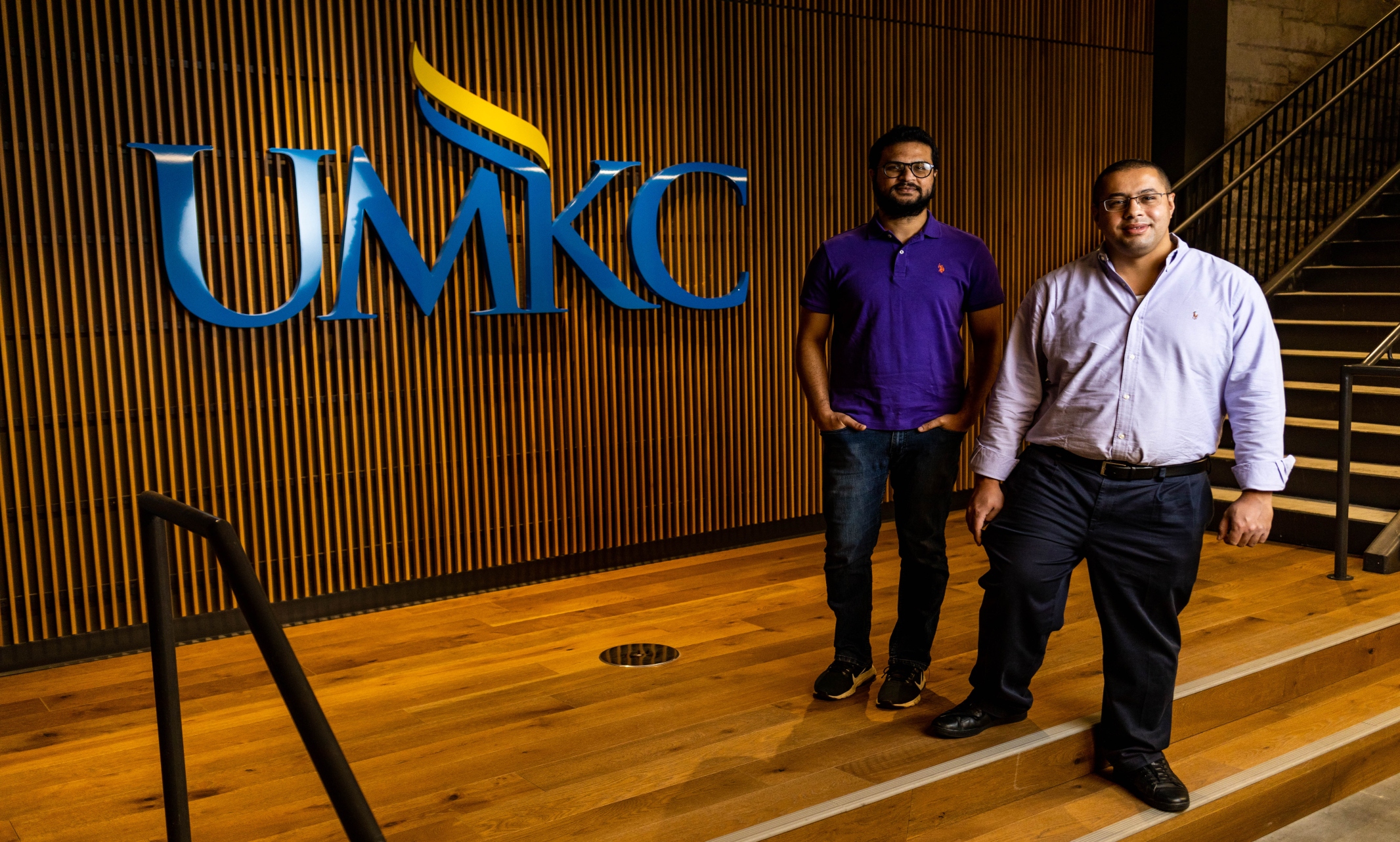A UMKC professor and student are among a team of researchers that have recently published a historic scientific paper measuring the exact shape of 25 dust participles collected from the Apollo 11 moon landing in 1969.
Research by Ahmed Hassan, Ph.D., associate professor of computing and engineer at UMKC, and Somen Baidya, Ph.D., will allow scientists to get one step closer to understanding why and how the moon reflects light.
"Our collaborates measured the 3D shapes of each sample," Hassan said. "We can look at those samples and calculate the electromagnetic properties like optical properties, or how they reflect light. By observing the light, we are able to get a better understanding of the optical characteristics of the moon as a whole."
The immediate practical application is satellite navigation, which can involve optical images of the moon. Longer-term, understanding properties of the dust will play a key role in creating a habitable living space for long-duration moon missions.
The research team also includes scientists from the National Institute of Standards and Technology, the U.S. Air Force Research Laboratory and the Space Science Institute.
The team's new research method both measures and computationally analyzes how the moon dust particle shapes scatter in the light.
The procedure involved stirring the particles into epoxy, which was then dropped over the outside of a tiny straw and mounted on the heads of pins, before being inserted into a special X-ray microscope capable of measuring the 3D shapes of each of the samples.
Hassan said the team sends him images of those samples to calculate the electromagnetic properties, such as how much they reflect light.
"We observe the light to be able to better understand the optical characteristics of the element," he said.
Hassan said the research has been a great way to help students relate to research they are working on.
"My main area of research is electromagnetic radiation. I love this field and I'm extremely passionate about it, but sometimes it's hard for students to relate to it because most electromagnetic radiation is invisible. You don't see microwaves or infrared rays reflected from things. This is a great way to correlate electromagnetics with a practical, real-life application that almost everyone is excited about."
Baidya, whose primary research for his Ph.D. (which he received this summer) involved studying human cells, said begin involved in the particle research helped expand his understanding of cell makeup.
"This research helped my previous studies about cell shapes," Baidya said. "It was a fantastic experience. I feel very lucky to have been able to work on this and contribute."
Research on the lunar particles is ongoing, and Hassan said the team has yet to scratch the surface of all the information they want to know. Now that the team has learned the shape of the particles, they are looking into developing ways to calculate the "mechanical and hydrodynamic properties of the dust."
"That means if this lunar sand gets into certain fluids, in the future when we maybe have settlements and astronauts there for a longer period of time, how can you filter them? How can you apply electric techniques to filter the lunar dust from the air?" Hassan said. "This is less than one percent of the particles that we have processed and it's only one set of characteristics that we have calculated. We're hoping to compute and study many, many more characteristics."
Scientific research aside, both Baidya and Hassan said simply being able to work with the moon particles has been "fantastic."
"All of us growing up have those dreams of becoming an astronaut or doing something space-related," Hassan said. "So seeing those samples, it's hard to describe the feeling of seeing those samples and knowing they are from outer space. It's really, really interesting."

